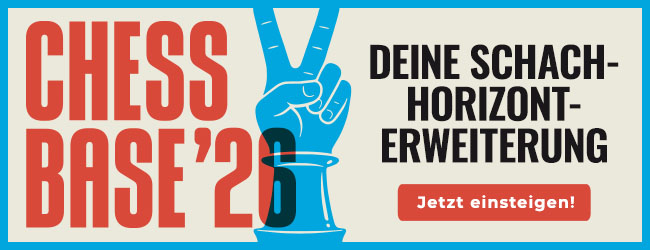Kleine Geschichte der Kandidatenturniere
Nach dem zweiten Weltkrieg übernahm der Weltschachbund FIDE die Organisation der Schachweltmeisterschaften, die zuvor von den jeweiligen Weltmeistern privat geregelt worden war. Der amtierende Weltmeister hatte sich einen würdigen Herausforderer ausgesucht und gegen diesen seinen Titel verteidigt. Der letzte dieser "Privat-Weltmeister" war Alexander Aljechin.
Am 24. März 1946 starb Alexander Aljechin - unter reichlich ungeklärten Umständen - und die FIDE nutzt diese Gelegenheit nun die Weltmeisterschaften zu regeln und zu organisieren. 1948 wurde in Groningen und Moskau ein Turnier um die Weltmeisterschaft ausgetragen, aus dem Michail Botwinnik als Sieger hervorging.
Die FIDE führte außerdem einen recht klaren Qualifikationsmodus ein, mit Zonenturnieren, Interzonenturnieren und einem Kandidatenturnier zum Schluss. Dieses Format hielt bis 1962. Nach dem Kandidatenturnier von Curacao 1962 beschwerte sich der damals erst 19-jährige Bobby Fischer öffentlich, dass die sowjetischen Spieler - nicht alle - ihn mit Remisabsprachen betrogen hätten.
Nach der Rückkehr von Curacao in die USA gab Fischer ein Interview in „Sports Illustrated“ („The Russians Have Fixed World Chess“), in dem er die sowjetischen Spieler beschuldigte, ihre Ergebnisse abgesprochen zu haben, um ihn am Sieg zu hindern. Tatsächlich spielten Petrosian, sein Freund Geller, aber auch Keres, der eigentlich als guter Sportsmann galt, gegeneinander alle zwölf Partien in maximal 19 Zügen remis und schonten so ihre Kräfte für die Partien gegen die anderen Spieler und besonders gegen Fischer.

Keres und Fischer beim Kandidatenturnier 1959, Pal Benkö (li.) schaut zu
Tatsächlich waren die Ergebnisabsprachen von sowjetischen Spielern bei Turnieren dieser Art ein generelles Problem und 1962 auch nicht neu. Bekannt ist, dass David Bronstein und sein Freund Issac Boleslavsky ihren Stichkampf nach dem Kandidatenturnier 1950 bis ins Detail abgesprochen hatten und dass die sowjetischen Teilnehmer beim Kandidatenturnier 1953 in Zürich/Neuhausen angewiesen waren, so zu spielen, dass Vassily Smyslov das Turnier gewinnen konnte.
Die folgende berühmte Partie war aber sicher nicht abgesprochen:

Die Autogramme der Teilnehmer 1962 | Foto: Auktionshaus Kittich-Pfannkuch
Nach 1962 war erst einmal Schluss mit Kandidatenturnieren.Die FIDE ließ nun stattdessen Kandidatenzweikämpfe durchführen.
Dieses Qualifikationssystem hielt bis 1993. Dann entschieden Nigel Short und Garry Kasparov im Streit mit dem damaligen FIDE-Präsidenten Florenco Campomanes, ihren WM-Kampf unter Ausschluss der FIDE auszutragen. Kasparov gewann und verwaltete seinen Titel wieder auf privater - oder halboffizieller - Basis, bis er 2000 von Vladimir Kramnik entthront wurde.
Campomanes wurde 1995 aus dem Amt gedrängt und sein Nachfolger Kirsan Ilyumzhinov führte für die FIDE 1997 erst einmal alternative Weltmeisterschaftsturniere im K.o.-Format ein, die Kandidatenkämpfe, in welcher Form auch immer, überflüssig machten.
Mit Vladimir Kramnik kam es 2006 wieder zur Zusammenführung der beiden konkurrierenden Weltmeisterschaftssysteme und anfangs wurden für die Ermittlung eines Herausforderers auch wieder Kandidatenkämpfe durchgeführt, doch es stellte sich bald heraus, dass die Zeit dafür vorbei war. Im Laufe der Jahr hatte sich der Turnierkalender zunehmend gefüllt. Für mehrstufige Kandidatenwettkämpfe war gar kein Platz mehr. 2007 und 2011 hatte die FIDE etwas halbherzig solche noch zentral in Elista und Kazan durchgeführt. 2007 wurde einige Plätze für das WM-Turnier 2007 in Mexiko vergeben. Es dauerte etwas , bis die FIDE 2011 wieder ein transparentes Qualifikationssystem etabliert hatte. 2011 wurde dann in Kandidatenkämpfen ein Herausforderer für Weltmeister Anand gesucht.
Die Matches, vor allem 2011, waren allerdings recht langweilig. Viele Partien endeten schnell remis, die Entscheidungen fielen meist erst in den Schnellschach- oder Blitz-Tiebreaks.
Aus diesem Grund führte die FIDE 2013 wieder das Format eines Kandidatenturniers ein. Inzwischen hatte der Weltschachbund die Vermarktungsrechte für die Weltmeisterschaften an den inzwischen verstorbenen Andrew Paulson und seine Firma Agon (heute Worldchess) übertragen.
Eine von Paulsons Neuerungen bestand darin, die großen Turniere nicht mehr irgendwo in Osteuropa durchzuführen, sondern in den Metropolen. So fand das ersten Kandidatenturnier nach 1962 im Jahr 2013 in London statt. Der Sieger hieß am Ende Magnus Carlsen, allerdings nur knapp nach Zweitwertung vor dem punktgleichen Vladimir Kramnik. Wie bekannt, wurde Carlsen dann auch Weltmeister.
Im Kandidatenturnier 2014 in Khanty-Mansiysk setzte sich dann Carlsens Vorgänger Viwanathan Anand souverän durch und durfte seinen Nachfolger herausfordern, jedoch ohne Erfolg. Die nächsten Kandidatenturniere 2016 in Moskau und 2018 in Berlin gewannen Sergey Karjakin und Fabiano Caruana.
Beide schafften in ihren Wettkämpfen gegen Titelverteidiger Magnus Carlsen zwar ein ausgeglichenes Ergebnis mit 6:6 nach dem regulären Ende, unterlagen aber gegen den wohl weltbesten Schnellschach- und Blitzspieler im Stichkampf.
Nun werden die Karten im Kandidatenturnier von Jekaterinburg (früher: Sverdlovsk) neu gemischt. Fabiano Caruana ist klarer Elofavorit, doch entscheidend wird die aktuelle Form sein. Vielleicht spielt im Dezember 2020 mit Ding Liren oder Wang Hao erstmals in der Geschichte des Schachs ein Chinese um die Weltmeisterschaft.
Alle Partien in der Mega Database
Die ChessBase Mega Database 2020 ist mit über 8 Mio. Partien aus dem Zeitraum 1560 bis 2019 im ChessBase Qualitätsstandard die exklusive Schachdatenbank für höchste Ansprüche.
Sieger bei Kandidatenturnieren und- kämpfen (ohne Interregnum 1993-2006)
Sieger bei Kandidatenturnieren bis 1962
1950: David Bronstein (Sowjetunion, nach Stichkampf gegen Isaac Boleslavsky)
1954: Vassily Smyslov (Sowjetunion)
1956: Vassily Smyslov (Sowjetunion)
1960: Michail Tal (Sowjetunion)
1962: Tigran Petrosian (Sowjetunion)
Sieger der Kandidatenwettkämpfe 1966 bis 1993
1965: Boris Spassky (Sowjetunion)
1968: Boris Spassky (Sowjetunion)
1971: Bobby Fischer (USA)
1974: Anatoly Karpov (Sowjetunion)
1977: Viktor Kortschnoi (Schweiz)
1980: Viktor Kortschnoi (Schweiz)
1984: Garri Kasparow (Sowjetunion)
1987: Anatoly Karpov (Sowjetunion)
1990: Anatoly Karpov (Sowjetunion)
1993: Nigel Short (England)
2011: Boris Gelfand (Israel)
Sieger der Kandidatenturniere seit 2013
2013: Magnus Carlsen (Norwegen)
2014: Viswanathan Anand (Indien)
2016: Sergey Karjakin (Russland)
2018: Fabiano Caruana (USA)
FIDE-Tournament History...

























